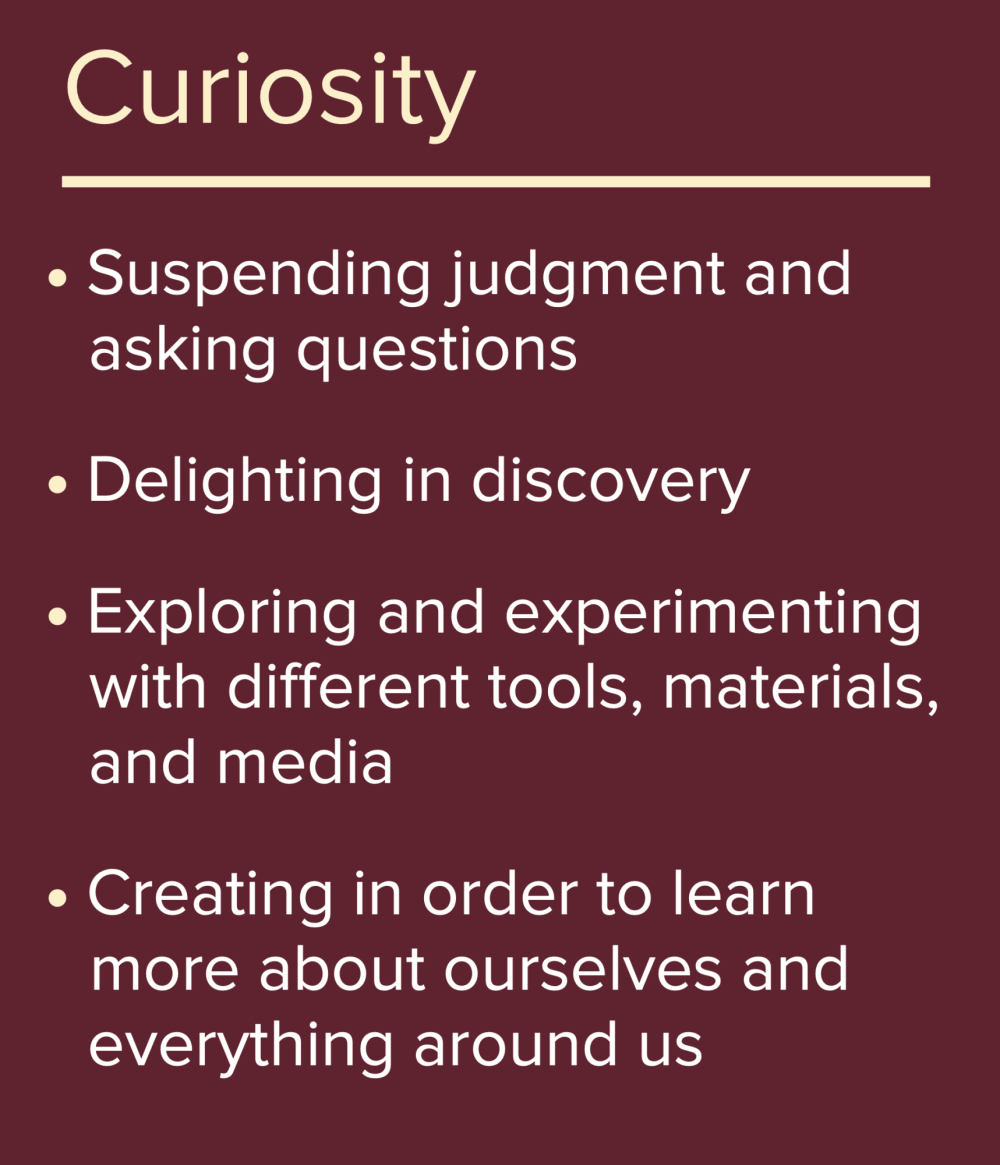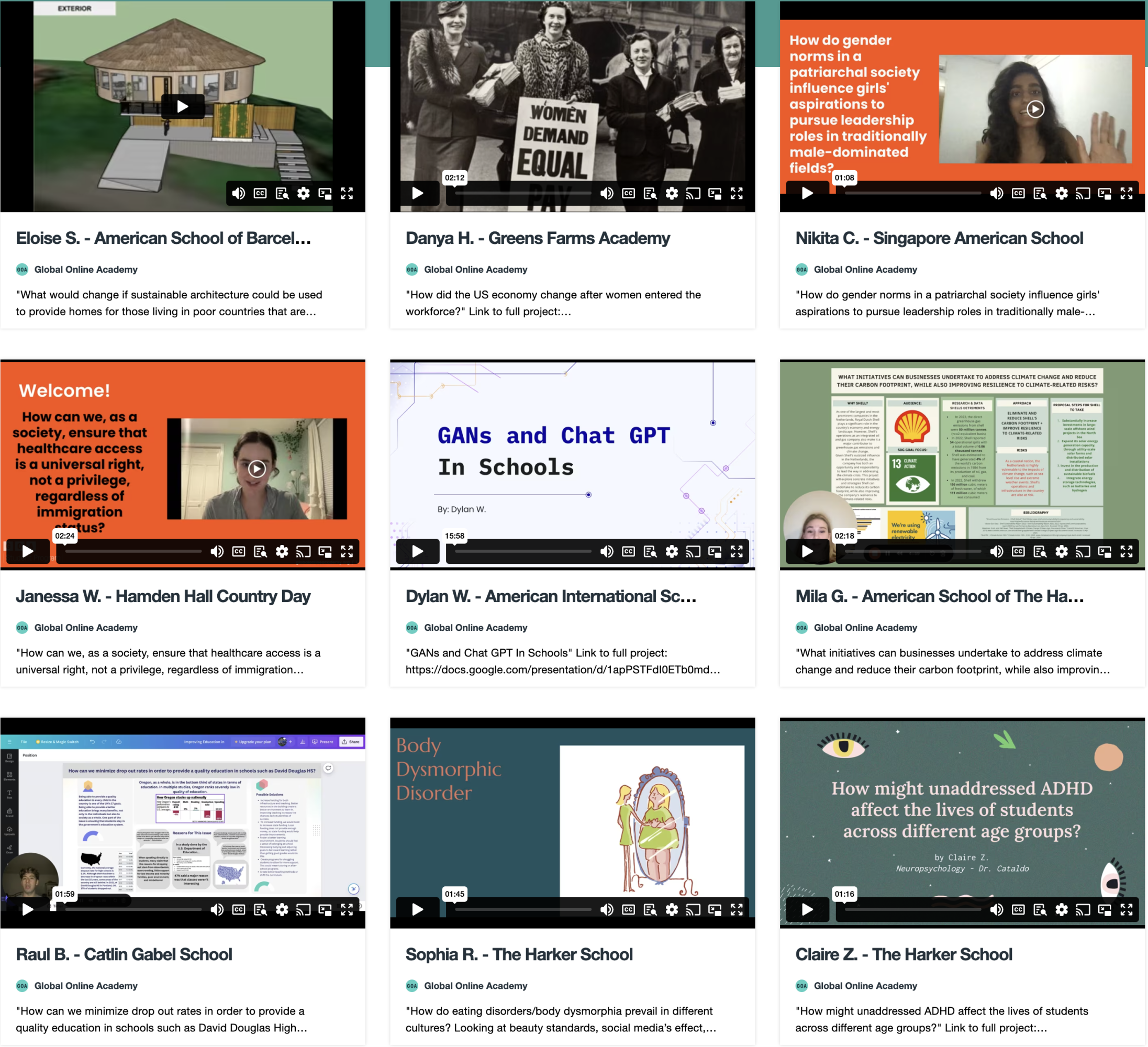Back to School 2024: Curiosity vs. Certainty
Every summer, I ask a few of my mentors what they’ve enjoyed reading recently. Reading what they mention refuels my sense of inspiration and gratitude, reminding me that there is so much to learn from these wise people. This year, I happened to notice that each of them responded to my thank you note with something along the lines of, “Oh, I don’t know anything. I just try to keep learning.” Hm, I thought. This is interesting.
At GOA, we have worked with dozens of schools on developing Portraits of a Graduate as well as competency frameworks. Many, if not all, of them have identified curiosity as a graduate habit or schoolwide competency. Learning how to ask questions and pursue new ideas leads to agency, engagement, and purpose; it prepares learners for unscripted futures.
At GOA, we have also worked with thousands of educators on designing rubrics that align to clear learning criteria and outcomes, attempting to make sense of what knowing something means. As Margaret Wheatley describes in her essay Willing to Be Disturbed, “We weren’t trained to admit we don’t know. Most of us were taught to sound certain and confident, to state our opinion as if it were true.” We are taught to know things, and to be confident in that knowledge.
But that’s not what we need. What we need for this complex world, Wheatley writes, is to “spend more time in not knowing.”
It’s an interesting dichotomy. In our schools, we hope to graduate learners who are curious while we assess them, along the way, for what they know. What if a provocation for this year was to assess for curiosity instead?
Suspend and Surrender
“True curiosity requires that I suspend judgment and all that I think I know.” - Elena Aguilar
If we are to lean into assessing curiosity, perhaps we need to begin by determining what it would look like to display curiosity or to be curious? One great answer comes from The Berkeley Carroll School in Brooklyn, NY. In their Portrait of a Learner, Curiosity is described as shown below:

What does it mean to display or demonstrate curiosity? In Berkeley Carroll’s Portrait of a Learner, we find four answers. Curiosity can be multidimensional, and Berkeley Carroll’s Portrait offers clarity and choice to accommodate for that.
Interestingly, in both Elena Aguilar’s quote above and in Berkeley Carroll’s Portrait of a Learner, we find the phrase “suspend judgment.” In her book, Rising Strong, Brene Brown describes curiosity to be challenging “because it requires us to surrender to uncertainty.” Suspending and surrendering are not words we often use to describe learning experiences, with both alluding to a loss of control.
Losing control of certainty is uncomfortable. In fact, research shows that the feeling of knowing or of being certain is more than comfortable; it is as satisfying as an aha moment. We long for stories to make sense. In fact, we’ll live most of our lives knowing half-truths but feeling certain all the same. Brown explains, “our default is often to come up with a story that makes sense, feels familiar, and offers us insight.” To suspend and surrender to not knowing is challenging and uncomfortable.
So how might we try it? What might it look like to develop and demonstrate curiosity in our learners and in ourselves?
What do I know? What do I wonder?
“The important thing is not to stop questioning. Curiosity has its own reason for existence.” - Einstein
In her 2007 book Mindset, author Carol Dweck introduced the concept of the growth mindset. The growth mindset embraces the concept of yet, as in, “have you made sense of the quadratic formula?”... “not yet.” It hasn’t happened but it can and will happen later. Should we lean into assessing curiosity, we must lean into learning journeys - those that allow for yets and for growth.
One way to do that is through the simple act of reflection. What do I know? What do I wonder?
A memorable learning experience that brought this to life for me occurred a few years ago during one of my literature classes. Before starting a new unit, I’d often ask students (and myself) what we already knew or thought we knew about the setting of an upcoming text. In this case, we were reading The White Tiger by Aravind Adiga, which takes place in India, so I asked students to reflect on and share some of what they knew about India. Here are a couple of examples of what they shared:
In some ways, there was range; in others, not. Elephants, colors, poverty, food, and fashion were frequent. We collectively wondered: for a country so large, so populated, and with a long documented history, why did we all know (or think we knew) these same few things? What questions did we need to ask ourselves and why hadn't we asked them earlier? How many other incomplete stories do we have? Likely many.
Pursuing curiosity, the goal is not to complete these stories, but to begin the process of feeling wonder about them. Incomplete stories are starting points. Brene Brown writes, “we have to have some level of knowledge or awareness before we can get curious. We aren’t curious about something we are unaware of or know nothing about.” Through activities like this one, that reveal to us how little we really know, we can embrace our power of yet. I do not know more than this yet.
For more concrete ideas, check out John Spencer’s 7 Ways to Integrate Curiosity into the Classroom.
Delighting in Discovery
“Creativity is the focused combination of unlikely things. Your mind locks onto a certain element and then searches widely for something unexpected that fits with it. What can scuba diving teach you about agriculture? What can trees teach you about public speaking? There is always some connective tissue between disciplines. If you wish to be more creative, look for the connections between two previously unconnected things.” - James Clear
My favorite of Berkeley Carroll’s descriptors is Delighting in Discovery. My interpretation of this is similar to the aha moment of knowing, but the aha of discovering something anew. As we seek to encourage curiosity, providing our learners with opportunities to ask questions, explore real-world connections, and formulate new ideas is essential. It drives student agency, motivation, and purpose.
Annually, GOA’s Global Capstone Showcase provides learners this kind of opportunity by guiding them through a process of crafting a beautiful question before researching and designing a response to it. GOA’s Senior Learning Design Coach Natalie Broderick shares that the Global Capstone “exemplifies student agency by encouraging students to take charge of their own learning, to become creative problem-solvers, and to develop the skills and confidence to make an impact in their lives and their communities.”

For inspiration on this process, check out this blog post. To explore GOA’s Global Capstone Showcase, click here.
Welcome 2024-2025
As we begin this new year, our GOA Professional Learning Team wishes you a year filled with my mentors’ responses: a year of not knowing, or keeping learning, of questions that lead to more questions - for our students and for ourselves. We hope to join you in learning about and fostering environments where curiosity thrives in our professional learning offerings, either in-person or online. We are eager to lean into our own curiosity and learn from and with you.
For more, see:
GOA serves students, teachers, and leaders and is comprised of member schools from around the world, including independent, international, charter, and public schools. Learn more about Becoming a Member. Our professional learning opportunities are open to any educator or school team. Follow us on LinkedIn. To stay up to date on GOA learning opportunities, sign up for our newsletter.


